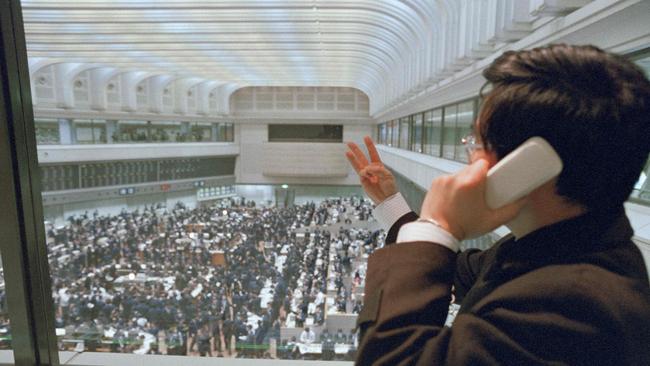Why it’s much soon to talk of a market bubble
Despite the strength of the US economy, there’s growing chatter a stockmarket bubble is emerging but that suggestion isn’t supported by the evidence.

Despite ongoing uncertainty about the strength of the US economy, market chatter is emerging of a stockmarket bubble. With some experience and understanding of how bubbles form, that anyone is suggesting we’re in a bubble today surprises me.
Sure, stocks have done well. The ASX Small Ordinaries Index is up 3.45 per cent year-to-date and the ASX 200 is up 1.3 per cent. Meanwhile, in the US the S&P 500 is up 7.08 per cent. But they’re not numbers that suggest a bubble. Even looking at the gains since the most recent lows – the S&P 500 is up 23 per cent since its October 2023 lows, and the ASX 200 is up 13 per cent over the same period – that’s not a bubble.
Let’s take a step back for a moment. There’s plenty of evidence that markets tend to trend. By that I mean they are more likely to continue in the same direction than reverse. I remember my days at BT Australia in the early 1990s. Back then Richard Farleigh, a chess prodigy and Mensa genius, worked out that markets “continued” about 55 per cent of the time and “reversed” 45 per cent of the time. In other words, an investor could leverage 10 per cent net winners to create an advantage.
Trends exist because information is absorbed gradually by the market, price moves are slowed by inertia and scepticism, and rising prices attract more buyers. Right now it’s safe to say markets are trending up. Many investors still fear a recession or that interest rates will remain elevated for a while longer, but also there are plenty yet to be drawn into the market.
Meanwhile, reporting season revealed some exceptional results. The standouts from the end of reporting season were Life 360 and Audinate. Audinate’s shares are up 35 per cent year to date and Life 360’s are up 48 per cent. Small is indeed beautiful!
In a previous column I predicted 2024 would be a great year for equities, especially small caps. Plenty of high-quality, innovative growth companies reside in the small cap sector of the market and Audinate and Life360, both holdings in our small cap fund, are testament to the merit behind that forecast.
And there are other signs we haven’t anything like bubble territory conditions.
Typically, bubbles are defined by euphoria. That euphoria manifests in various ways. One is the proliferation of initial public offerings. Another is the magnitude of first-day price increases for those IPOs.
Investments banks know they must “feed the ducks while they’re quacking” so they provide a steady stream of selldowns and sellouts when markets are hot and potentially irrational. And when markets are hot and irrational, those that missed out fear further opportunity costs, pushing IPO share prices higher on their first day.
In 1999, when I was working at Merrill Lynch, there was a stunning 470 or so IPOs in the US and a reported 70 per cent first-day capital gain across all IPOs. I recall there was something like a 90 per cent first-day gain for Nasdaq-listed IPOs.
More recently, there were more than 300 IPOs in 2021 as the market heated up post-pandemic. First-day gains averaged more than 30 per cent. We are nowhere near those numbers today. In 2023 there weren’t many more than 50 IPOs and the first-day average gain was about 10 per cent. The ducks aren’t quacking. Yet.
Every week the American Association of Individual Investors surveys members, asking whether they feel bullish, bearish or neutral. The current survey level is in bullish territory, but nowhere near the level of extreme sentiment that has defined previous tops and bottoms. Notably in March 2009 the survey revealed extreme bearishness. That was the bottom of the GFC-inspired crash and markets have increased substantially since.
And thinking further about liquidity, it might make sense to consider foreign fund flows into the US dollar. At the moment the US dollar remains resilient due to inflows on the back of geopolitical concerns and a lack of growth in China, as well as the possibility of a deflation trap there.
For as long as America seems like the safest place to park money, US stocks will be a beneficiary. And that means, to varying degrees, our market will follow.
Sentiment is deeply unpredictable and I wouldn’t ever base an investment strategy on it. But extreme sentiment, either bullish or bearish, is always worth paying attention to.
Given we don’t appear to have extreme or irrationally bullish sentiment, there is no reason to think we should be basing any investment decisions on sentiment.
Meanwhile, history suggests the economic backdrop is supportive for innovative companies, and in Australia there are plenty that are growing at double-digit rates.
Roger Montgomery is founder and chief investment officer at Montgomery Investment Management




To join the conversation, please log in. Don't have an account? Register
Join the conversation, you are commenting as Logout